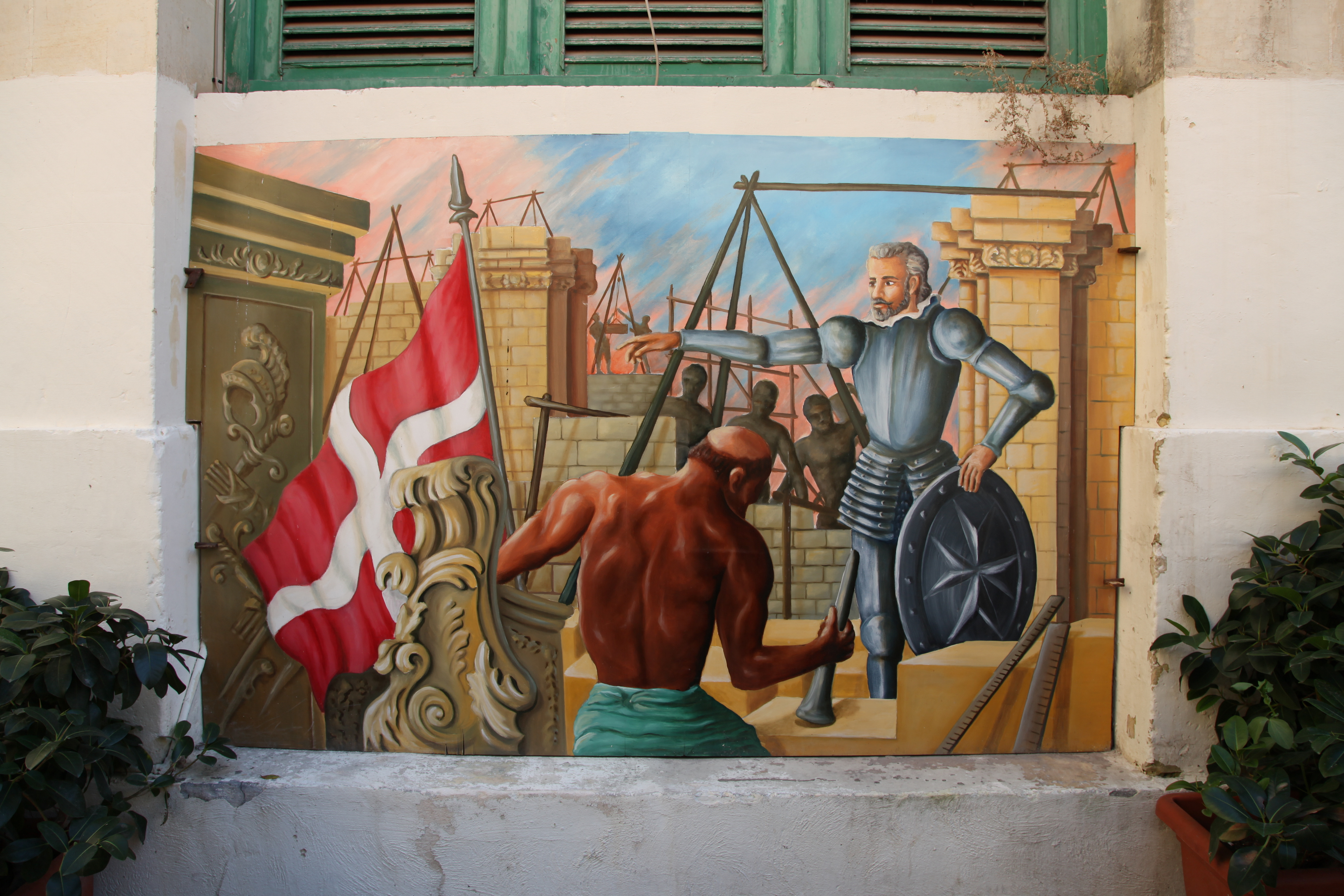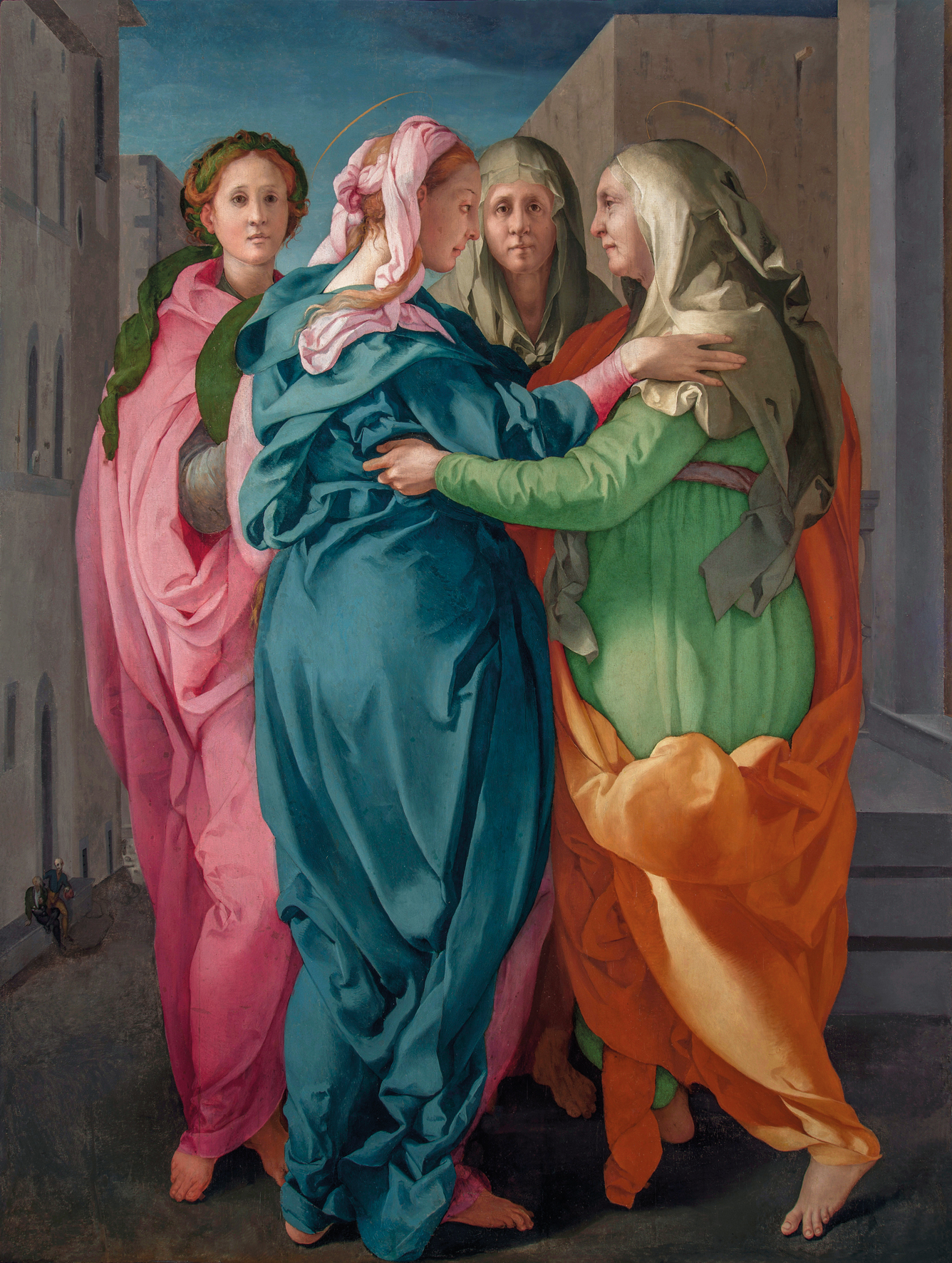|
Church Of Our Lady Of Pilar, Valletta
The Church of Our Lady of the Pillar (Maltese: ) is a 17th-century church located in Valletta, Malta. The church was built as the church of the Aragonese knights and modeled according to the plans of the architect Romano Carapecchia. The church is listed on the National Inventory of the Cultural Property of the Maltese Islands. Origins The church was built in the 1670s as the church of the Aragonese knights. It was built adjacent to the Auberge d'Aragon. The cornerstone was laid by Grandmaster Nicolas Cotoner and its construction was financed mainly by the Balì of Majorca Raimondo de Soler and Felice Inniges de Ayerba, the Bali of Caspe'. The latter was buried in the same church in front of the high altar. The church that was built in 1670 was damaged by the earthquake of 1693. Thus the church was remodelled on the plans of Romano Carapecchia. The church was completed in 1718. It was funded by Grandmaster Ramon Perellos y Roccaful. Architecture The church has a narrow façad ... [...More Info...] [...Related Items...] OR: [Wikipedia] [Google] [Baidu] |
Valletta
Valletta ( ; , ) is the capital city of Malta and one of its 68 Local councils of Malta, council areas. Located between the Grand Harbour to the east and Marsamxett Harbour to the west, its population as of 2021 was 5,157. As Malta’s capital city, it is a commercial centre for shopping, bars, dining, and café life. It is also the southernmost capital of Europe, and at just , it is the European Union's smallest capital city. Valletta's 16th-century buildings were constructed by the Hospitaller Malta, Knights Hospitaller. The city was named after the Frenchman Jean Parisot de Valette, who succeeded in defending the island against an Ottoman invasion during the Great Siege of Malta. The city is Baroque architecture, Baroque in character, with elements of Mannerist architecture#Mannerist architecture, Mannerist, Neoclassical architecture, Neo-Classical and Modern architecture, though the Second World War left major scars on the city, particularly the destruction of the Royal Oper ... [...More Info...] [...Related Items...] OR: [Wikipedia] [Google] [Baidu] |
Stefano Erardi
Stefano Erardi (1630–1716) was a Maltese painter whose works may be found in many churches around the Maltese Islands. His style has been described as either late Mannerist or Baroque. Biography Erardi was born in Valletta in 1630 to Sebastiano Erardi and Paulica Xerri. His younger brother Pietro was also a minor artist. Erardi married Caterina Buttigieg, and their son Alessio Erardi also became a painter. His works may be regarded as either late examples of Mannerism or early Baroque. Mannerism was outdated by Erardi's lifetime, but he probably became familiar with this style through studying paintings located in churches and collections in Malta. Erardi might have also been influenced by the works of Baroque artists such as Caravaggio, Domenichino and Guido Reni. Erardi was favoured among the government and church authorities, and consequently his paintings may be found in many churches and collections around Malta. He also had connections with Sicily, Naples and Rome wh ... [...More Info...] [...Related Items...] OR: [Wikipedia] [Google] [Baidu] |
Buildings And Structures In Valletta
A building or edifice is an enclosed structure with a roof, walls and windows, usually standing permanently in one place, such as a house or factory. Buildings come in a variety of sizes, shapes, and functions, and have been adapted throughout history for numerous factors, from building materials available, to weather conditions, land prices, ground conditions, specific uses, prestige, and aesthetic reasons. To better understand the concept, see ''Nonbuilding structure'' for contrast. Buildings serve several societal needs – occupancy, primarily as shelter from weather, security, living space, privacy, to store belongings, and to comfortably live and work. A building as a shelter represents a physical separation of the human habitat (a place of comfort and safety) from the ''outside'' (a place that may be harsh and harmful at times). buildings have been objects or canvasses of much artistic expression. In recent years, interest in sustainable planning and building pract ... [...More Info...] [...Related Items...] OR: [Wikipedia] [Google] [Baidu] |
Zaragoza
Zaragoza (), traditionally known in English as Saragossa ( ), is the capital city of the province of Zaragoza and of the autonomous communities of Spain, autonomous community of Aragon, Spain. It lies by the Ebro river and its tributaries, the Huerva and the Gállego (river), Gállego, roughly in the centre of both Aragon and the Ebro basin. On 1 January 2021, the population of the municipality of Zaragoza was 675,301, (as of 2023, the Ranked lists of Spanish municipalities#By population, fourth or fifth most populous in Spain) on a land area of . It is the list of cities in the European Union by population within city limits, 26th most populous municipality in the European Union. The population of the metropolitan area was estimated in 2006 at 783,763 inhabitants. The municipalities of Spain, municipality is home to more than 50 percent of the Aragonese population. The city lies at an elevation of about height above mean sea level, above sea level. Zaragoza hosted Expo 2008 ... [...More Info...] [...Related Items...] OR: [Wikipedia] [Google] [Baidu] |
Cathedral-Basilica Of Our Lady Of The Pillar
The Cathedral Basilica of Our Lady of the Pillar () is a Catholic church in the city of Zaragoza, Aragon. It is dedicated to the Mary, mother of Jesus, Blessed Virgin Mary under the title of Our Lady of the Pillar, praised as "Mother of the Hispanic Peoples" by Pope John Paul II.Fr. Tommy LanHomily during a pilgrimage to Zaragoza, Spainon Bible, Prayer, Homily resources website. It is reputed to be the first-ever Shrines to Mary, mother of Jesus, church dedicated to Mary. Local traditions take the history of this basilica to the spread of Christianity in Hispania, Roman Spain attributing to an Marian apparition, apparition to Saint James the Great, the Twelve apostles, apostle who is believed by tradition to have brought Christianity to the country.Our Lady of the Pillar on The work of God websi ... [...More Info...] [...Related Items...] OR: [Wikipedia] [Google] [Baidu] |
Religion In Malta
Catholic Christianity is the predominant religion in Malta. The Constitution of Malta establishes Catholicism as the state religion, and it is also reflected in various elements of Culture of Malta, Maltese culture. According to a 2018 survey, the overwhelming majority of the Maltese population adheres to Christianity (95.2%) with Catholicism as the main denomination (93.9%). According to a Eurobarometer survey conducted in 2019, 83% of the population identified as Catholic Church, Catholic. Similarly, the 2021 census of the population found that 82.6% belonged to the Catholic church. Malta's patron saints are Paul the Apostle, St Paul, St Publius and Agatha of Sicily, St Agatha. The Assumption of Mary known as Santa Marija is the special patron of several towns in Malta and she is celebrated each 15 August. Combined survey figures suggest that around half the population are not practising Catholics, or adhere to a different religion, or to none. History of religion in Ma ... [...More Info...] [...Related Items...] OR: [Wikipedia] [Google] [Baidu] |
History Of Malta
Malta has been inhabited since 6400 BC initially by Mesolithic hunter gatherers, who were replaced by Early European Farmers, Neolithic farmers from Sicily around 5400 BC. These farmers practiced mixed farming after clearing most of the existing conifer forest that dominated the islands, but their agricultural methods degraded the soil until the islands became uninhabitable. The islands were repopulated around 3850 BC by a civilization that at its peak built the Megalithic Temples of Malta, Megalithic Temples, which today are among the oldest surviving buildings in the world. Their civilization collapsed in around 2350 BC; the islands were repopulated by Bronze Age warriors soon afterwards. Malta's prehistory ends in around 700 BC, when the islands were colonized by the Phoenicians. They ruled the islands until they Capture of Malta (218 BC), fell in 218 BC to the Roman Republic. The island was acquired by the Eastern Romans or Byzantine Empire, Byzantines in ... [...More Info...] [...Related Items...] OR: [Wikipedia] [Google] [Baidu] |
Culture Of Malta
The culture of Malta has been influenced by various societies that have come into contact with the Maltese Islands throughout the centuries, including neighbouring Mediterranean cultures, and the cultures of the nations that ruled Malta for long periods of time prior to its independence in 1964. History The culture of prehistoric Malta The earliest inhabitants of the Maltese Islands are believed to have been Sicani from nearby Sicily who arrived on the island sometime before 5000 BC. They grew cereals and raised domestic livestock and, in keeping with many other ancient Mediterranean cultures, formed a fertility cult represented in Malta by statuettes of unusually large proportions. Pottery from the earliest period of Maltese civilization (known as the Għar Dalam phase) is similar to examples found in Agrigento, Sicily. These people were either supplanted by, or gave rise to a culture of megalithic temple builders, whose surviving monuments on Malta and Gozo are cons ... [...More Info...] [...Related Items...] OR: [Wikipedia] [Google] [Baidu] |
The Malta Independent
''The Malta Independent'' is a national newspaper published daily in Malta. It was started in 1992. The paper Paper is a thin sheet material produced by mechanically or chemically processing cellulose fibres derived from wood, Textile, rags, poaceae, grasses, Feces#Other uses, herbivore dung, or other vegetable sources in water. Once the water is dra ... publishes an online version branded as ''Malta Independent Online''. References External links Official Website 1992 establishments in Malta English-language newspapers published in Malta Maltese news websites Newspapers established in 1992 Daily newspapers {{Malta-newspaper-stub ... [...More Info...] [...Related Items...] OR: [Wikipedia] [Google] [Baidu] |
Heritage Malta
Heritage Malta () is the Maltese national agency for museums, conservation practice and cultural heritage. Created by the Cultural Heritage Act, enacted in 2002, the national agency (along with the Superintendence for Cultural Heritage) replaced the former Museums Department. Originally Heritage Malta was entrusted with the management of museums, sites and their collections but in 2005, the agency was also charged with the take over of the former Malta Centre for Restoration to become the national agency responsible for conservation. As the national agency responsible for museums, cultural heritage and conservation, Heritage Malta is governed by a board of directors appointed by the minister. The board is headed by a chairman and is usually appointed for successive three-year terms. Logo Until 2022, the logo of Heritage Malta consisted of a white uppercase Ħ on a red square. The H with stroke is a letter found only in the Maltese alphabet. In 2022, Heritage Malta changed its ... [...More Info...] [...Related Items...] OR: [Wikipedia] [Google] [Baidu] |
Visitation (Christianity)
In Christianity, the Visitation, also known as the Visitation of the Blessed Virgin Mary, refers to the visit of Mary, who was pregnant with Jesus, to Elizabeth, who was pregnant with John the Baptist, in the Gospel of Luke, . The episode is one of the standard scenes shown in cycles of the Life of the Virgin in art, and sometimes in larger cycles of the Life of Christ in art. It is also the name of a Christian feast day commemorating this visit, traditionally celebrated on July 2 in Western Christianity and March 30 in Eastern Christianity. In the revised calendars of some churches in the West, it is now often celebrated on May 31 instead. Biblical narrative The Gospel of Luke gives the only Biblical account of the Visitation: In the story, Mary visited her cousin Elizabeth, the wife of Zechariah. They are both pregnant, Mary with Jesus and Elizabeth about six months' pregnant with John the Baptist (). Mary left Nazareth immediately after the Annunciation and wen ... [...More Info...] [...Related Items...] OR: [Wikipedia] [Google] [Baidu] |






